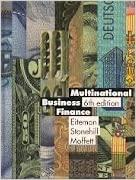


Stock A has a beta of 0.8, Stock B has a beta of 1.0, and Stock C has a beta of 1.2. Portfolio P has 1/3 of its value invested in each stock. Each stock has a standard deviation of 25%, and their returns are independent of one another, i.e., the correlation coefficients between each pair of stocks is zero. Assuming the market is in equilibrium, which of the following statements is CORRECT? Portfolio P's expected return is equal to the expected return on Stock B. Portfolio P's expected return is equal to the expected return on Stock A. Portfolio P's expected return is greater than the expected return on Stock B. Portfolio P's expected return is less than the expected return on Stock B. Portfolio P's expected return is greater than the expected return on Stock C. Stock A has a beta =0.8, while Stock B has a beta =1.6. Which of the following statements is CORRECT? If the risk-free rate increases but the market risk premium remains constant, the required return on Stock A will increase by more than that on Stock B. If the marginal investor becomes more risk averse, the required return on Stock A will increase by more than the required return on Stock B. An equally weighted portfolio of Stocks A and B will have a beta lower than 1.2. Stock B's required return is double that of Stock A's. If the marginal investor becomes more risk averse, the required return on Stock B will increase by more than the required return on Stock A. Assume that to cool off the economy and decrease expectations for inflation, the Federal Reserve tightened the money supply, causing an increase in the risk-free rate, rRF. Investors also became concerned that the Fed's actions would lead to recession, and that led to an increase in the market risk premium, (rMrRF). Under these conditions, with other things held constant, which of the following statements is most correct? Stocks' required returns would change, but so would expected returns, and the result would be no change in stocks' prices. The required return on all stocks would increase by the same amount. The prices of all stocks would increase, but the increase would be greatest for high-beta stocks. The prices of all stocks would decline, but the decline would be greatest for high-beta stocks. The required return on all stocks would increase, but the increase would be greatest for stocks with betas of less than 1.0









